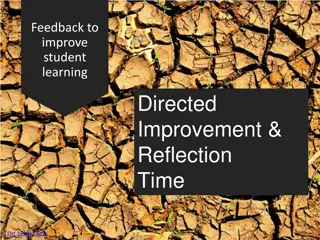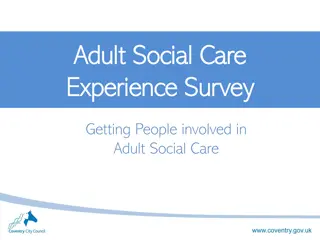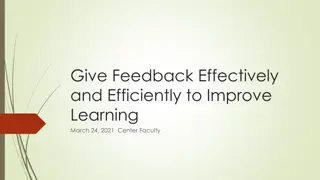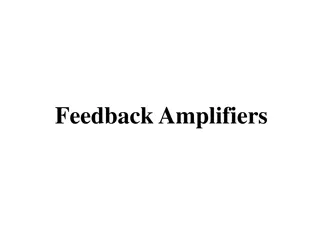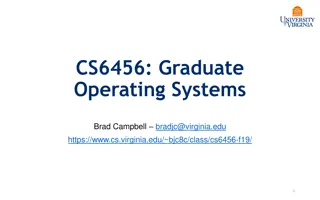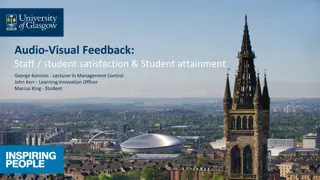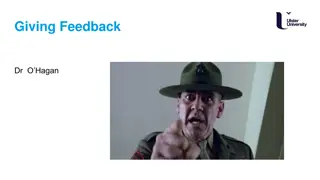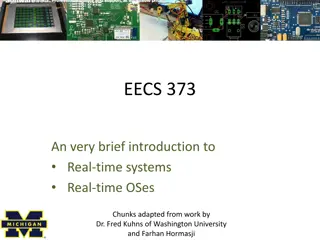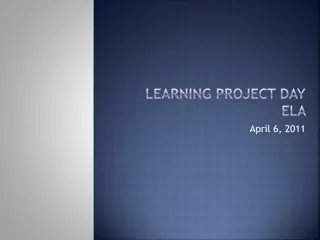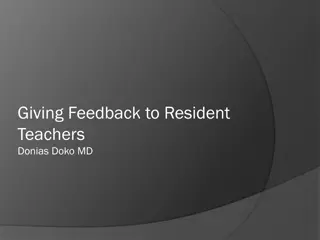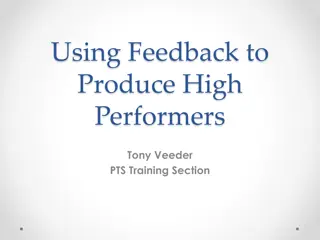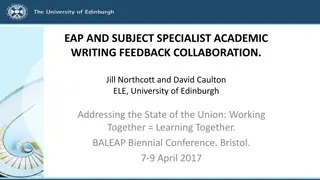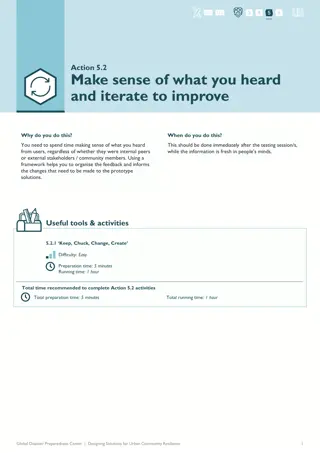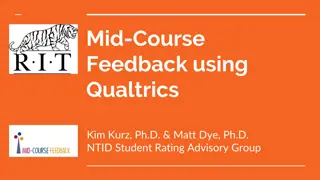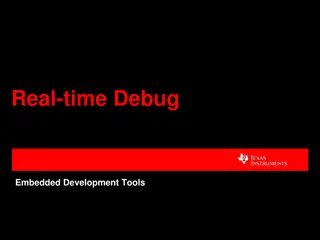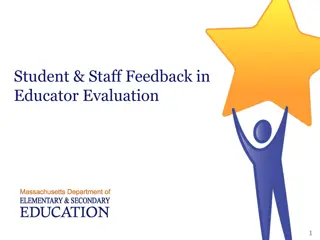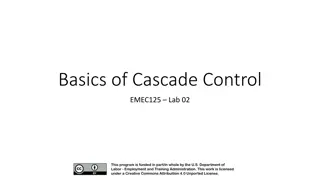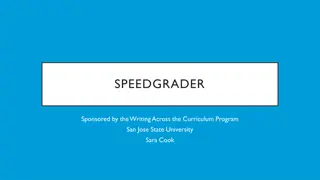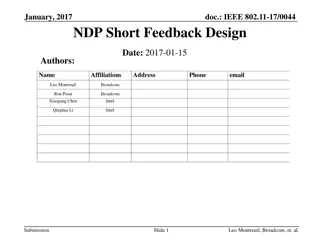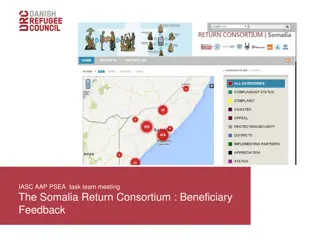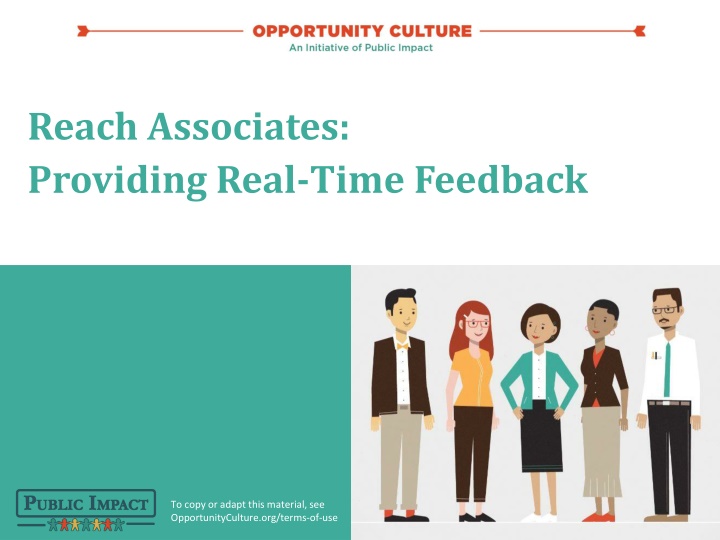
Enhancing Student Learning with Real-Time Feedback
Explore the concept of real-time feedback in education, understand its importance in promoting learning and retention, and discover effective strategies to provide feedback to students. Learn the difference between feedback and advice to create a positive learning environment that supports student growth and development.
Download Presentation

Please find below an Image/Link to download the presentation.
The content on the website is provided AS IS for your information and personal use only. It may not be sold, licensed, or shared on other websites without obtaining consent from the author. If you encounter any issues during the download, it is possible that the publisher has removed the file from their server.
You are allowed to download the files provided on this website for personal or commercial use, subject to the condition that they are used lawfully. All files are the property of their respective owners.
The content on the website is provided AS IS for your information and personal use only. It may not be sold, licensed, or shared on other websites without obtaining consent from the author.
E N D
Presentation Transcript
Reach Associates: Providing Real-Time Feedback To copy or adapt this material, see OpportunityCulture.org/terms-of-use 2019 |1
Do Now When you hear the word feedback, what comes to mind? Write each word that comes to mind on a different sticky note. Time for this activity: 3 minutes 2019 |2
Session Objectives Understand what real-time feedback is to promote learning and retention. Practice providing effective real-time feedback to students. Explore strategies to structure the classroom to help you provide effective real-time feedback to students. 2019 |3
What is Real-Time Feedback? See Handout Students need to know their learning target the specific skill they re supposed to learn or else feedback is just someone telling them what to do. Most of the feedback that students receive about their classroom work is from other students and much of that feedback is wrong. Effective feedback occurs during the learning, while there is still time to If students know the classroom is a safe place to make mistakes, they are more likely to use feedback for learning. act on it. The feedback students give teachers can be more powerful than the feedback teachers give students. When we give a grade as part of our feedback, students routinely read only as far as the grade. Feedback is not advice, praise, or evaluation. Feedback is information about how we are doing in our efforts to reach a goal. Quotation source: http://www.ascd.org/ASCD/pdf/journals/ed_lead/el201209_takeaways.pd 2019 |4
What is Advice (Not Feedback)? See Handout You might want to use a different verb tense. You need more examples in your report. You should have included the steps in your essay. This Photo by Unknown Author is licensed under CC BY-SA 2019 |5
Compare and Contrast Advice Effective Feedback Moves a student toward a goal Gives a grade Personal to a student One-way communication Engages student in the process Can be positive Usually happens after the fact Happens in the moment 2019 |6
Why Provide Real-Time Feedback? Build confidence Clear steps to improve Enhance student educational experience Identify strengths & weaknesses Show achievement Improves performance Supports Learners Correct errors Identify strengths & weaknesses Is accountable & developmental Clarify how a specific grade was reached Assess against outcomes to aid development Source: Adapted from MOOC Infographics. https://elearninginfographics.com/category/mooc-infographics/ 2019 |7
Real-Time Feedback Framework See Handout Personalized Constructive Goal Referenced Engages Learners Timely 2019 |8
Effective Real-Time Feedback See Handout How do Mr. McComb s strategies apply to the framework of effective real-time feedback? Video: https://www.teachingchannel.org/videos/personalize-feedback-for-students 2019 |9
Fixed vs. Growth Mindsets See Handout Source: https://danielsteachingtips.weebly.com/item-7.html 2019 |10
Promoting a Growth Mindset Say This Not That Praise the effort a student exhibits during a task Avoid statements that suggest a student is smart I like the way you tried all kinds of strategies on that math problem until you finally got it. Wow, you did great on that math problem you re so smart! It was a long, hard assignment, but you stuck to it and got it done. That s great! See, I told you that would be easy you re smart! For the student who gets an A without trying: All right, that was too easy for you. Let s do something more challenging that you can learn from. Nice job, you got an A without even trying. For the student who works hard and doesn t do well: I liked the effort you put in. Let s work together some more and figure out what you don t understand. Some people are just not good at math don t worry about it. 2019 |11
Part 1: Role-Play Scenarios See Handout Directions: Pair up with a partner and decide who is the reach associate and who is the student for the Scenario A, then switch roles for Scenario B. Read each role-play scenario out loud. Discuss: What were examples of effective feedback? Less effective feedback? From the student perspective, how did the less effective feedback make you feel? How would you improve the feedback to make it more effective? 2019 |12
Part 2: Role Play Scenarios See Handout Directions: Pair up with a partner and decide who is the reach associate and who is the student for Scenario C, then switch roles for Scenario D. Individually read the scenario intro for your role. Begin acting and practice giving effective real-time feedback to the student, then switch! Two partner groups will perform in front of the whole group and receive feedback that follows the framework. 2019 |13
Self-Reflection: Real-Time Feedback See Handout 2019 |14
Action Steps Write down and share out a few next steps you commit to incorporating into your work based on your takeaways from this session. Next Steps By Whom By When Notes/Resources 2019 |15
Resources for Additional Learning 7 Keys to Effective Feedback (ASCD) http://www.ascd.org/publications/educational-leadership/sept12/vol70/num01/Seven-Keys-to- Effective-Feedback.aspx 5 Research-Based Tips for Providing Students with Meaningful Feedback (Edutopia) https://www.edutopia.org/blog/tips-providing-students-meaningful-feedback-marianne-stenger Academic Tenacity: Mindsets and Skills that Promote Long-Term Learning (Dweck, Walton & Cohen) https://ed.stanford.edu/sites/default/files/manual/dweck-walton-cohen-2014.pdf How to create higher performing happier classrooms in seven moves (Christensen Institute) https://www.christenseninstitute.org/wp-content/uploads/2017/01/How-to-create-higher- performing-happier-classrooms-in-seven-moves.pdf Make It Count: Providing Feedback as Formative Assessment (Edutopia) https://www.edutopia.org/pdfs/blogs/edutopia-hicks-feedback-assess-RISE.png Classroom Practice for Providing Feedback (Edutopia) http://www.ascd.org/publications/books/111001/chapters/Setting-Objectives-and-Providing- Feedback.aspx Teaching Strategies Essentials: Giving Feedback (Teach Hub) http://www.teachhub.com/teaching-strategies-essentials-giving-feedback 2019 |16
Follow Us! Keep up to date on Opportunity Culture with resources and research from Public Impact by following: @OppCulture @PublicImpact Facebook.com/OpportunityCulture Facebook.com/PublicImpact LinkedIn.com/company/public-impact---chapel-hill-nc Subscribe to the quarterly Opportunity Culture newsletters, with content by and for Opportunity Culture educators, and sign up to get Remind messages for them: Remind.com/join/ocnew OpportunityCulture.org/mailing-list/ 2019 |17

